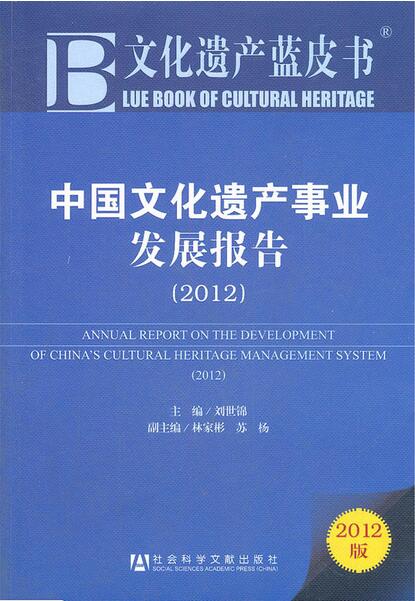The Blue Book of Cultural Heritage: Development Report of China’s Cultural Heritage 2012
Aug 09,2016

By Liu Shijin, Vice President of DRC
Based on a preliminary study of relevant research findings, this book gives a periodic summary of the development of China’s cultural heritage. It points out that compared with the future tasks in terms of cultural heritage, we still have a long way to go. It provides some well-grounded suggestions for related work like the protection of cultural relics and the management of tourist attractions. Besides, it gives a clear definition to heritage tourism as well as a quantitative analysis of its development trend.
This book consists of three major parts composed of keynote report, technical report and assessment report. The keynote report has four chapters: 1. Outlook on the “12th Five-Year Plan”; 2. The contribution rendered by cultural heritage and related industries to economic and social development; 3. The mechanism for cultural heritage management; 4. Its development during the “12th Five-Year Plan” period, and the evaluation of the cultural heritage management. The technical report has four chapters: 1. The difficulties for the development of cultural heritage during the “12th Five-Year Plan” period viewing from a perspective beyond cultural heritage; 2. A calculation of the contribution made by cultural heritage and related industries to national economy; 3. A detailed illustration of the institutional systems and mechanisms of cultural heritage management at various levels; 4. A quantitative evaluation of the management level of cultural heritage. The assessment report has four chapters: 1. Contents of the assessment and ways for making and applying the assessment; 2. A comparative analysis of investment in cultural heritage system during the “11th Five-Year Plan” period; 3. An assessment of the efficiency of the work of cultural heritage in 2010; 4. A conclusion of the assessment report. This book also includes two topics of particular concern. One is “Culture is indispensable in the ecological compensation policy”, and the other one is “A review of the institutional changes of the cultural heritage management viewing from related issues in the museum.”
Headed by Liu Shijin, Vice President of DRC, the research team on the study of cultural heritage completed this report through a number of discussions and revisions. Thanks are given to all those who have given kind assistance to the research work as well as the writing and publishing of the book. Due to limited time and knowledge, some mistakes and errors in the book are unavoidable and all criticisms and comments are sincerely welcome.














